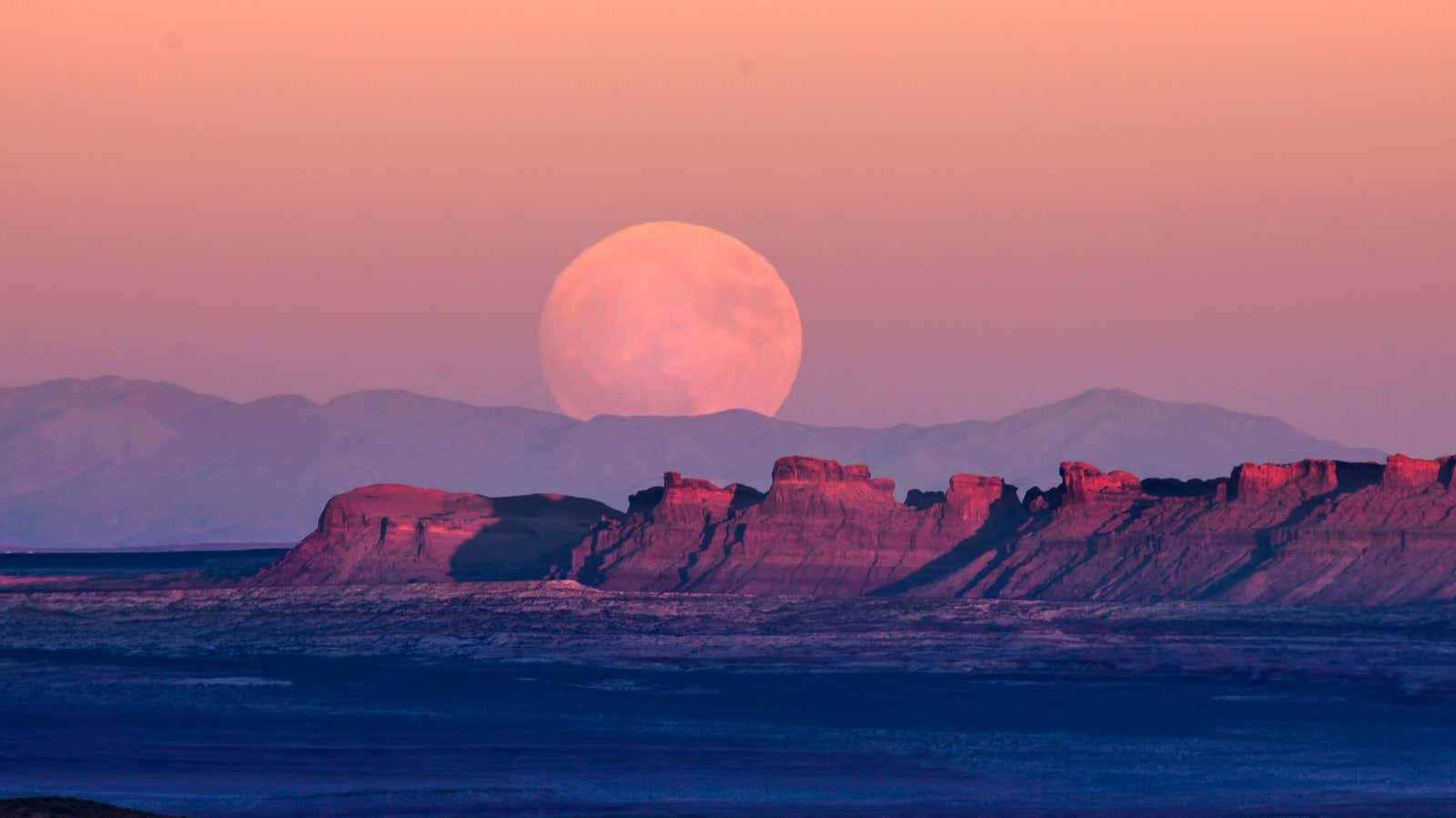When to Catch the “worm Moon” This Month at Its Peak

The celestial calendar is in full swing this year, and the next visual treat should hit the night sky on Sunday, March 28: Worm Moon. This particular moon will be large and easy to spot as it hangs high above the Earth, as it always does during its annual March appearance. Here’s more information on the Worm Moon and how it got its terrestrial name.
What is a worm moon?
Worm Moon – March full moon. There is a full moon in every month, with some exceptions as not all full moons are the same. If we’re too specific, a true full moon only exists under certain conditions.
Space.com explains:
It is only when the Moon, Earth, and Sun are perfectly aligned that the Moon becomes 100% full, and this alignment causes a lunar eclipse .
Most lay people aren’t bothered by these cosmological details, but Worm Moon will meet those criteria on Sunday, March 28 at 2:48 pm ET. When the Sun, Moon, and Earth are perfectly aligned, the moment is known as “syzygy”, which is at the heart of the concept of a true full moon.
Where did the name Worm Moon come from?
This actually turns out to be an awkward question. According to the Farmer’s Almanac , this name belongs to 18th century explorer captain Jonathan Carver, who coined the term “worm moon” from the beetle larvae that appeared on Earth after the soil began to melt under the spring sun. There is also a more generalized explanation that the moon got its name from worms that became visible in thawed soil around this time of year.
Other names have been given to this moon over the centuries, most of which come from Indian tribes.
Some of them are listed below according to Alamanak:
The Sugar Moon (Ojibwe) marks the time of year when the sap of the sugar maples begins to flow.
The High Wind Moon (Pueblo) refers to the strong windy days that occur during this time of the year.
A painful-eyed moon (Dakota, Lakota, Assiniboine) accentuates the blinding rays of sunlight that reflect off the melting snow of late winter.
How to see it
Worm Moon is a three-day treat that spans between Friday, March 26th (tonight) and its peak on Sunday, March 28th. On Monday, the 29th moon will also show a 99% luminance moon (which means you probably won not notice the difference).
The best time to see the Worm Moon is moonrise on Sunday (18:48 UTC), so check where you live when that happens.
Is this a supermoon?
Defining a supermoon is an imprecise science – and is actually just a term that is somewhat arbitrary used by news outlets for headlines that can be clicked. But the term goes back to the astrologer Richard Nolle, who in 1979 coined the term for “a new moon or full moon that occurs when the moon is within 90% of perigee, that is, closest to the Earth.”
However, there is some uncertainty regarding the classification of the Worm Moon as a supermoon, as science journalist Jamie Carter explains to Forbes :
A supermoon is a full moon that occurs within 90% of its closest approach to Earth in a given orbit. This definition yields four supermoons in 2021, of which “Superworm Moon” is the first in the sequence. However, this weekend’s full moon is right on the doorstep, with different definitions of a supermoon, including from astrologer Richard Knowle (originator of the term “supermoon”), suggesting that “Worm Moon” is too far away to be called a supermoon.
If this moon doesn’t get as close to Earth as some others, you can still find comfort in the next stream of moons, which are all approaching Earth and therefore considered supermoons without much controversy.
As NASA explains :
The full moon in April and May is almost equivalent to the closest full moons of the year. The Full Moon on May 26, 2021 will be slightly closer to Earth than the Full Moon on April 26, 2021, but only by 0.04%!
So even if Worm Moon does not technically qualify as a supermoon, there will certainly be follow-ups.